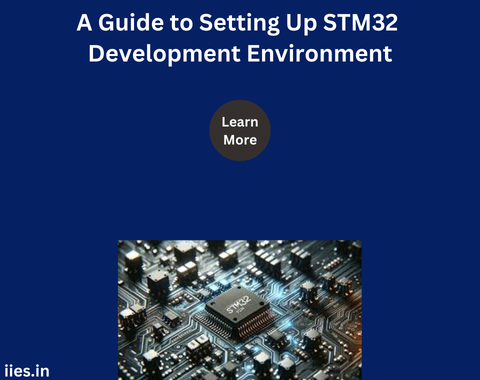1. Understanding the STM32 Ecosystem
Before diving into the setup process, it’s crucial to understand the STM32 ecosystem. The STM32 family consists of a wide variety of ARM Cortex-M-based microcontrollers that cater to different application needs. From low-power devices to high-performance models, STM32 microcontrollers are used in various domains, including automotive, industrial, consumer electronics, and more.
Key elements of the STM32 ecosystem include:
- STM32CubeMX: A graphical software configuration tool that allows developers to configure peripherals and generate initialization code for STM32 microcontrollers.
- STM32CubeIDE: An all-in-one integrated development environment (IDE) that combines the STM32CubeMX configuration tool with a powerful editor, compiler, and debugger.
- STM32Cube Firmware Packages: These packages provide drivers, middleware, and example projects for various STM32 microcontrollers.
- ST-LINK: An in-circuit debugger and programmer for the STM32 microcontroller families.
2. Choosing the Right Development Tools
Selecting the appropriate development tools is the first step in setting up your STM32 environment. Here are the primary tools you will need:
- Integrated Development Environment (IDE): While there are several options available, STM32CubeIDE is the most recommended as it integrates seamlessly with other STM32 tools.
- Compiler: STM32CubeIDE comes with the GNU Arm Embedded Toolchain (GCC), which is the most commonly used compiler for STM32 development.
- Debugger/Programmer: The ST-LINK/V2 or ST-LINK/V3 debugger/programmer is necessary for loading your code onto the microcontroller and debugging it.
3. Setting Up the Development Environment
A. Installing STM32CubeIDE
STM32CubeIDE is a one-stop solution that simplifies the setup process. It combines the configuration capabilities of STM32CubeMX with the development and debugging features of an IDE. Follow these steps to install STM32CubeIDE:
- Download STM32CubeIDE: Visit the STMicroelectronics website and download the latest version of STM32 CubeIDE compatible with your operating system (Windows, macOS, or Linux).
- Installation: Follow the on-screen instructions to install the IDE. Ensure you have administrative privileges if required by your operating system.
- Initial Setup: Upon launching STM32CubeIDE, you may need to configure your workspace, which is the directory where your projects will be stored.
B. Configuring STM32CubeMX
STM32CubeMX is integrated into STM32CubeIDE, making it easier to configure microcontroller settings. Use STM32CubeMX to:
- Select Your STM32 Microcontroller: Choose the specific STM32 microcontroller or board you are using from the extensive list provided.
- Configure Peripherals: Use the graphical interface to enable and configure the microcontroller peripherals you need for your application, such as GPIOs, timers, ADCs, etc.
- Generate Code: After configuring the peripherals, STM32CubeMX generates initialization code, which is automatically imported into your STM32CubeIDE project.
C. Setting Up the Debugger
For successful debugging and programming, ensure that your ST-LINK debugger is correctly set up:
- Connect the ST-LINK Programmer: Connect the ST-LINK to your development board and your computer via USB.
- Install ST-LINK Drivers: Ensure that the ST-LINK drivers are installed. These are usually included with STM32CubeIDE or can be downloaded separately from the STMicroelectronics website.
- Debug Configuration: In STM32CubeIDE, create a new debug configuration for your project, selecting the appropriate debugger (ST-LINK) and target microcontroller.
4. Exploring STM32Cube Firmware Packages
STM32Cube firmware packages provide essential resources for STM32 development, including:
- HAL (Hardware Abstraction Layer) and LL (Low Layer) drivers: These libraries simplify hardware interfacing and are crucial for developing reliable applications.
- Middleware Components: Middleware such as USB, TCP/IP, and file systems are included in these packages.
- Example Projects: These are pre-configured projects that can serve as a starting point or reference for your own development.
5. Best Practices and Tips
To maximize productivity and avoid common pitfalls:
- Stay Updated: Regularly update STM32CubeIDE, STM32CubeMX, and firmware packages to ensure you have the latest features and bug fixes.
- Organize Your Workspace: Keep your project directories well-organized and use version control systems like Git for better project management.
- Leverage Community Resources: The STM32 community is active and extensive. Utilize forums, GitHub repositories, and ST’s own resources for troubleshooting and learning.
